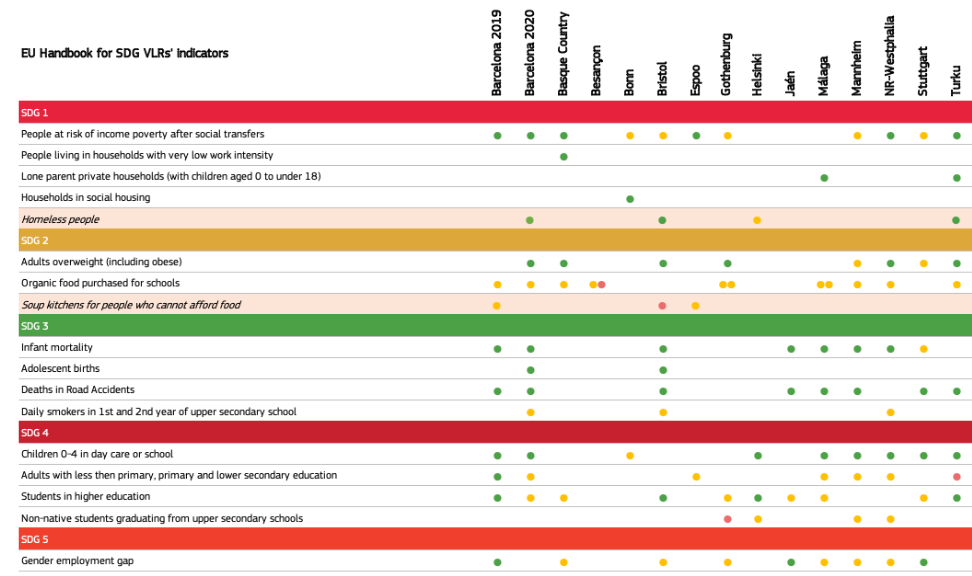Voluntary Local Reviews (VLRs) and SDGs indicators
The JRC studies SDG indicators and monitoring systems at local levels across Europe
Voluntary reviews (at national – VNR; local – VLR; and subnational – VSR – levels) are reports compiled by governments about their contribution towards the SDGs. These are Voluntary, but have been submitted extensively, by different level of government, across the globe. But when we talk about reporting at local level, the question of indicators arises: How to measure progress ? How to make the national and international indicators relevant to the local contexts? Which indicators should be used to highlight the level of implementation of the SDGs at local level?
If the RFSC provides a set of 169 indicators, and allows to add other ones, to monitor the implementation of local actions towards integrated and sustainable urban development, a selection of indicators still need to be made by local authorities to design monitoring systems relevant to local contexts.
The VLRs are good framing documents to refer to when implementing the SDGs. Indeed, some governments (at subnational and local levels) have gone as far as defining which indicators they would report on to monitor their local achievements in localising the 2030 Agenda for Sustainable Development. For those, the indicators they have selected and want to report on become the core of the voluntary review.
The Joint Research Centre (JRC) launched three methodological reports on the localisation of the Sustainable Development Goals (SDGs) in Europe. These reports provide evidence and insights on different elements and scales of the first-generation voluntary reviews. The reports include a comparative analysis of local indicators and data, and highlights commonalities and differences between and across local government SDGs monitoring systems, and according to European guidelines, such as the European Handbook for SDG Voluntary Local Reviews by the JRC.
